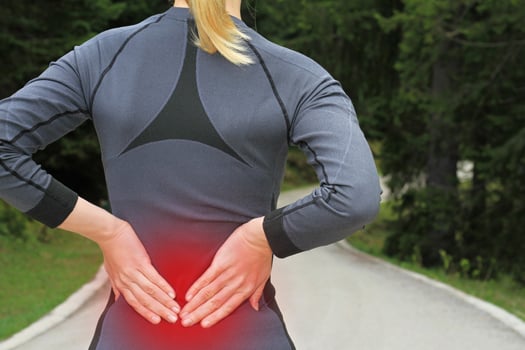
Reherniation refers to a situation where the same spinal disc becomes a source of nerve irritation again after surgery. It should be noted that reherniation can occur several months after having a discectomy or even several years later in some instances. This article covers some of the signs and symptoms commonly associated with reherniation.
Recurrence of Back Pain Near the Surgery Site
It is not unusual to have back pain return occasionally for other reasons. For example, you might strain muscles near your spine by lifting something incorrectly. This is not reherniation. However, back pain that returns in the area around the initial surgery is a possible sign of a reherniation.
Return of Radiating Nerve Pain
The return of radiating nerve pain is a common sign of spinal disc herniation. It is also a more significant indication of reherniation. This type of discomfort is typically caused by nerve irritation. For example, if the sciatic nerve is affected again by remaining disc material from the initial herniation, you will likely notice pain, numbness, tingling sensations, and general muscle weakness in your lower body. A common indication is pain that is mostly felt in one leg.
Symptoms that Come and Go
Spinal disc herniation does not always produce consistent discomfort. In fact, it is more common for pain and other symptoms to come and go based on various movements and activities. This often occurs because the affected disc material can shift when changing positions.
Return of the Symptoms Experienced Prior to Surgery
Another more telling sign of reherniation is a return of symptoms nearly identical to those experienced prior to surgery the first time. Your level of discomfort may be less noticeable or it may be more intense, depending on how the nerve is affected.
What to Do if Reherniation Is Suspected
Start by talking to your doctor, who will most likely have you undergo a physical exam. Image tests may be ordered as well. This is only likely to be the case if there is a strong indication of reherniation. Treatment depends on the nature and degree of your symptoms. Some patients with spinal disc reherniation benefit from physical therapy. However, if your symptoms are more severe, surgery may be recommended.
Reasons for Reherniation
Spinal disc reherniation is relatively rare, although it is more likely if you had a discectomy and only part of the protruding material was removed. Reherniation sometimes occurs naturally as discs shift. At other times, reherniation occurs because the patient has a more physically demanding occupation or a more active lifestyle. Poor posture can also contribute to reherniation. In some instances, not enough disc material is removed during a discectomy or less invasive microdiscectomy. Regardless of your own situation, do not ignore signs of a possible reherniation.
Even though discectomy surgery is a common and generally quite successful procedure, a hole is frequently left in the outer wall of the disc. In fact, patients with these large holes in their discs are more than twice as likely to reherniate. Reherniations often require additional surgery or even fusions. Fortunately, there is a new treatment specifically designed to close the large holes that are often left in spinal discs after discectomy surgery. Barricaid is a bone-anchored device proven to reduce reherniations, and 95 percent of Barricaid patients did not undergo a reoperation due to reherniation in a 2-year study timeframe. This treatment is done immediately following the discectomy—during the same operation—and does not require any additional incisions or time in the hospital.
If you have any questions about the Barricaid treatment or how to get access to Barricaid, ask your doctor or contact us at 844-288-7474.
For full benefit/risk information, please visit: https://www.barricaid.com/instructions.


Comments